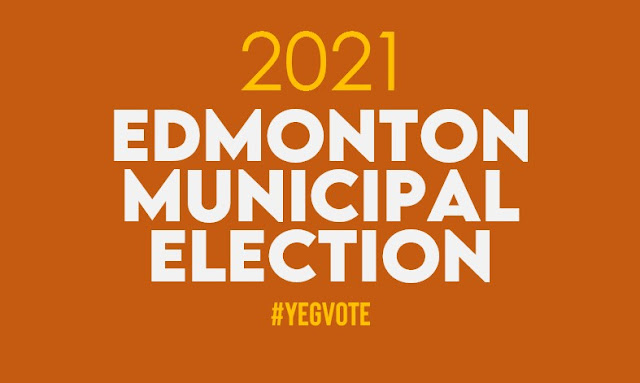The Trial of Delwin Vriend
How one man changed everything for LGBTQ+ rights in the Canadian workplace
By Murray Billett
THE importance of the 1998 Delwin Vriend Supreme Court case is best understood by sharing the fact that it is now studied in law schools around the world. Vriend was fired in 1991 from his teaching position at King's University College right here in Edmonton.
t
ALBERTA COURT OF QUEEN'S BENCH/
THE SUPREME COURT OF CANADA/
The Supreme Court endorsed that notion in their order which Premier Klein finally agreed to allow it to be read into provincial human rights law. It is noteworthy that it took much time later for the PC government to actually write-in sexual orientation into our human rights legislation.
p
By Murray Billett
THE BEGINNING/
 |
| Delwin Vriend |
t
To be clear, this turned into a human rights case with historical significance when our small LGBTQ+ community organized to take on the Government of Alberta. The Tory government of the day refused to accept his complaint, as Alberta’s Human Rights legislation did not include sexual orientation.
o
o
Consequently, their position made it clear that it was legal to discriminate against us. We organized, reached out to our allies and took them to court!
y
y
VRIEND V. ALBERTA/
Delwin Vriend, Gala-Gay and Lesbian Awareness Society of Edmonton, Gay and Lesbian Community Centre of Edmonton Society and Dignity Canada Dignité for Gay Catholics and Supporters v Alberta is a landmark Supreme Court of Canada case that determined that a legislative omission can be the subject of a Charter violation.
g
g
The case involved the dismissal of Delwin Vriend for his sexual orientation.
In 1991, Vriend was open within his congregation about being in a same-sex relationship.
f
Consequently, he was fired from his position at King's College, a private religious college because of his sexual orientation that was deemed incompatible with a newly created statement of religious beliefs adopted by the school.
f
Consequently, he was fired from his position at King's College, a private religious college because of his sexual orientation that was deemed incompatible with a newly created statement of religious beliefs adopted by the school.
He was prevented from making a complaint under the Alberta Individual Rights Protection Act because the legislation did not include sexual orientation as a prohibited ground of discrimination.
l
l
Vriend sought a declaration from the Alberta Court of Queen's Bench that the omission breached section 15 of Canada’s Charter of Rights and Freedoms.
p
p
Despite popular misunderstanding the Vriend case was not against King's College; Vriend never pursued a human rights complaint against the institution. The case strictly involved whether claims to the Human Rights Commission on the basis of sexual orientation could be investigated by the provincial human rights commission.
l
l
This first court action was taken in early 1994, and joining Delwin was Gala-Gay and Lesbian Awareness Society of Edmonton, Gay and Lesbian Community Centre of Edmonton Society and Dignity Canada Dignité for Gay Catholics, Alberta Civil Liberties Association, the Canadian Human Rights Commission and the Canadian Jewish Congress.
ALBERTA COURT OF QUEEN'S BENCH/
On April 12, 1994, Justice Russell of the Court of Queen's Bench ruled in favour of Vriend as the exclusion of sexual orientation as a protected ground of discrimination of the Individual’s Rights. Judge Russell ordered that sections of the IRPA “be interpreted, applied and administered as though they contained the words ‘sexual orientation’.”
o
o
This remedy is known as “reading in”: the court effectively added the words “sexual orientation” into the IRPA. From that day onwards, the Alberta Human Rights Commission would be required to offer protection to those who suffered discrimination on the basis of sexual orientation, such as Mr. Vriend.
p
p
THE APPEAL/
The Government of Alberta disagreed with this judgment and appealed to the Alberta Court of Appeal in 1996. The panel of three judges who heard the appeal were divided as to the outcome. Justices McClung and O’Leary ruled that the IRPA did not violate the Charter.
u
u
However, Justice Hunt agreed with the lower court’s decision. By a margin of two-to-one, the Court of Appeal reversed the decision of the lower court. This forced us to the only next step available, the Supreme Court of Canada.
THE SUPREME COURT OF CANADA/
Mr. Vriend was not satisfied with this result and applied for permission to have his case heard by the Supreme Court of Canada, the highest appellate court in the country.
r
r
The Supreme Court hears only the most important appeals from all the provinces and territories, and its decisions are final: they cannot be appealed to any other court. Mr. Vriend’s case was heard by the Supreme Court on November 4, 1997, and the written decision was released on April 2, 1998.
i
i
Interesting to note that the lawyers for the Government of Alberta failed to show a "rational connection". The Court was especially harsh on this point, stating: “Far from being rationally connected to the objective of the denied provision, the exclusion of sexual orientation from the Act is contrary to that goal.
u
u
"Indeed, it would be nonsensical to say that the goal of protecting persons from discrimination is rationally connected to, or advanced by, denying such protection to a group which this Court has recognized as historically disadvantaged.”
u
u
One of the Government’s appointed lawyers boldly stated that Alberta does protect gay people, in that if they get AIDS they will receive health care! A hush fell over the courtroom as one of the Supreme Court justices removed their glasses and admonished him.
p
p
DISSENTING VIEW/
Justice John C. Major wrote the sole dissenting opinion. He argued that "reading in" a sexual orientation provision in the Individual Rights Protection Act was not necessarily more "desirable" than simply dismissing the entire IRPA as unconstitutional, since the Alberta legislature had repeatedly indicated that they specifically did not wish to include such rights in the document.
o
o
Major wrote that the IRPA should in fact be overturned. He then suggested that the legislature may in turn wish to use the notwithstanding clause to pass a new IRPA that would be capable of excluding protection for homosexuals.
i
i
THE RESPONSE/
Following the decision, some Alberta MLAs called for the Government to invoke Canada's notwithstanding clause to overrule the decision. However, after our community spoke up loudly and clearly, Alberta Premier Ralph Klein opted not to do this. It was clear to him, the amount of hatred against LGBTQ+ was apparent.
The Supreme Court endorsed that notion in their order which Premier Klein finally agreed to allow it to be read into provincial human rights law. It is noteworthy that it took much time later for the PC government to actually write-in sexual orientation into our human rights legislation.
p
Not surprisingly, some religious groups had lobbied the provincial and federal governments to invoke Canada's notwithstanding clause to overrule the decision. As noted it was considered briefly by Premier Ralph Klein. We made it clear to them the charter was never designed to be a weapon.
p
p
TODAY/
We should be very grateful to Delwin Vriend and his family for never giving up. I am particularly grateful to the many people that were involved in making this historic case move forward. It is important to remember that in 2005, Delwin Vriend was placed 44th on the list published by Alberta Venture magazine as one of this century's 50 greatest Albertans! In 2011 Delwin Vriend was inducted into Canada’s Queer Hall of Fame.
g
The Supreme Court decision in Vriend vs. Alberta is studied in law schools around the world. It was also used to argue provincial cases against bans on same-sex marriage throughout Canada. In addition, the decision has had greater ramifications within Canadian law outside of sexual orientation issues.
g
g
The Supreme Court decision in Vriend vs. Alberta is studied in law schools around the world. It was also used to argue provincial cases against bans on same-sex marriage throughout Canada. In addition, the decision has had greater ramifications within Canadian law outside of sexual orientation issues.
g
It has shaped legal precedent concerning provincial and federal government relationships as well as labour and other civil rights and constitutional laws. It all happened right here in Alberta. A very proud moment that we should never forget.
The Fight for Sexual Orientation






Comments
Post a Comment